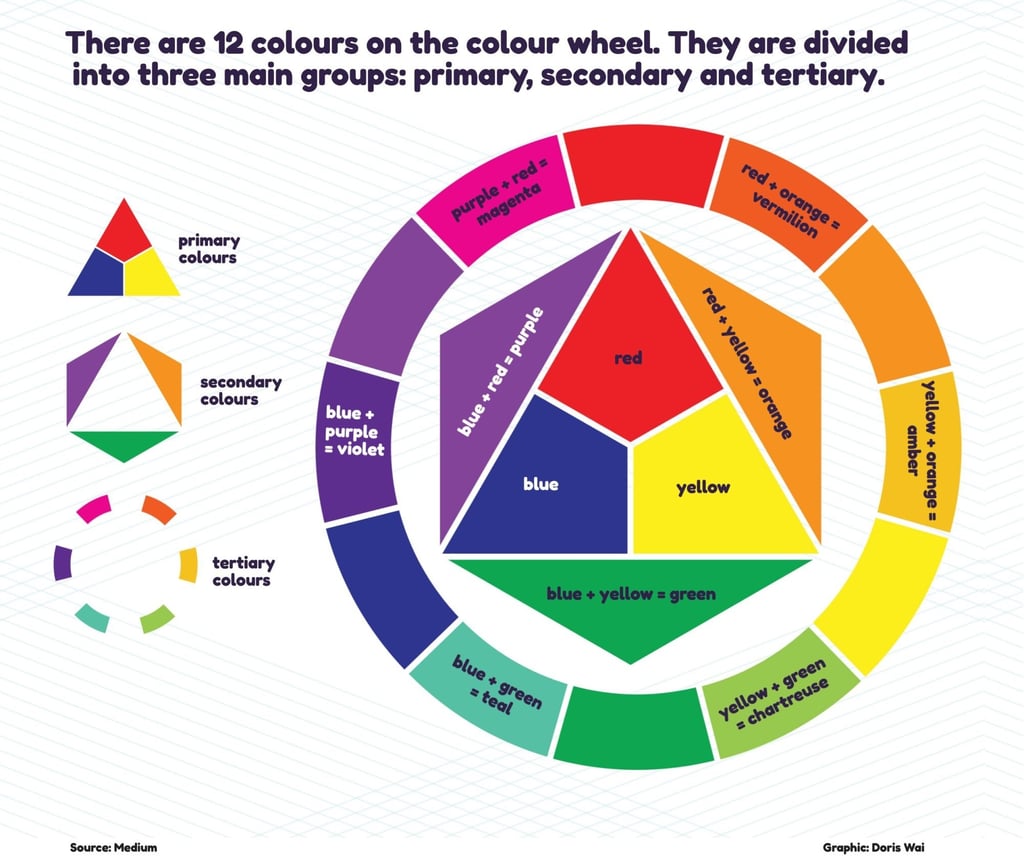
This handy tool is great for finding hues that complement each other




How do you make the colour purple?

What are the three primary colours?

How do you make the colour purple?

Have you ever tried mixing different colours to create something special? Learning about colour groups can help you get the shade you want.
There are three main colour groups: primary, secondary and tertiary.
The three primary colours are red, yellow and blue. These are the building blocks for all other colours.
Secondary colours are a product of mixing two primary colours together. Combining yellow and blue gives us green, while mixing red and yellow makes orange. We can produce different shades of green and orange by adding different amounts of the primary colours.
Tertiary colours are created by mixing a primary colour with a secondary colour that is next to it on the colour wheel. This is a diagram that shows how colours are related to each other. It can help us choose shades that look good together.

Colours that are directly across from each other on the wheel are complementary; for example, pairing blue and orange items can create contrast and add energy.
If colours are next to each other on the wheel, they will blend well together because they have similar bases, such as violet, purple and magenta.
By experimenting with the colour wheel, we can create lots of interesting colour combinations.


What are the three primary colours?